I buy and make a lot of almond milk. Mainly because I enjoy it, but also to write articles for this website and create the occasional social media post.
I might have 3-5 containers of almond milk in my fridge at any given time.
Despite my best effort, sometimes I don’t finish it all before the expiration date. In those situations, I’m faced with two options:
- Throw it out
- Freeze it and save it for later
Well, there is a third option—leave it in the back of the fridge until it expires.
But most of the time, I freeze my almond milk.
Curious about how to freeze almond milk? Or maybe you’ve tried it and ended up with an unusable grainy end-product.
Not to worry!
I’ll show you how to freeze almond milk without ruining the taste and texture!
Can You Freeze Almond Milk?
You can freeze almond milk by storing it in a container or ice cube trays. Freezing almond milk helps it last longer and prevents food waste.
Frozen almond milk is generally good for up to six months after freezing.
Keep in mind that freezing your almond milk will slightly change its taste and texture. But in my experience, the difference is barely noticeable.
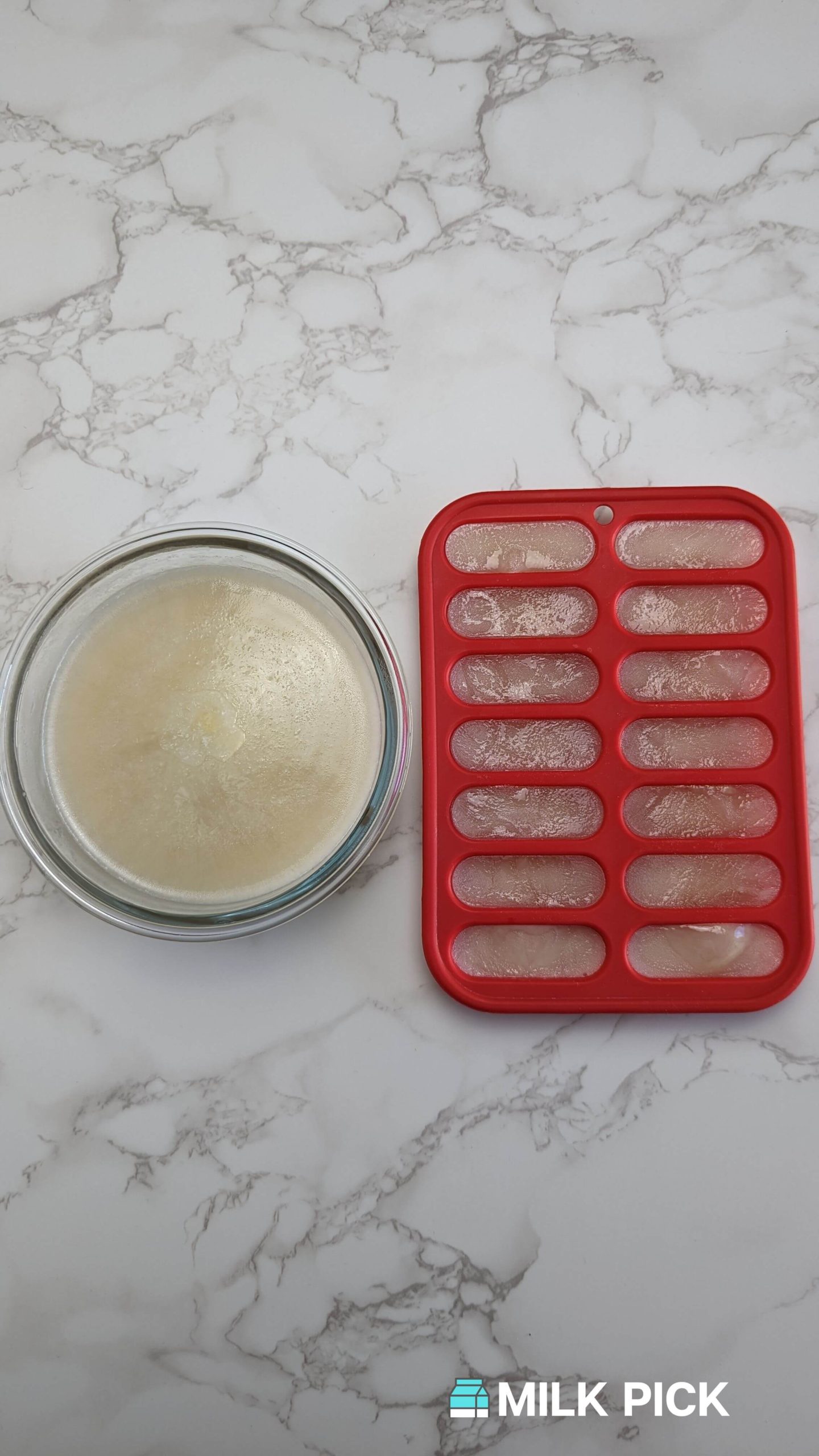
Almond milk frozen in glass container vs. ice cube tray
How to Freeze Almond Milk
I’m going to show you two different ways to freeze almond milk:
- How to freeze almond milk in a container
- How to freeze almond milk in an ice cube tray
The approach is similar for each. However, as you’ll see in my photos, the outcome is slightly different (visually).
I’m using the Original Almond version of Marin Living Foods for this guide.
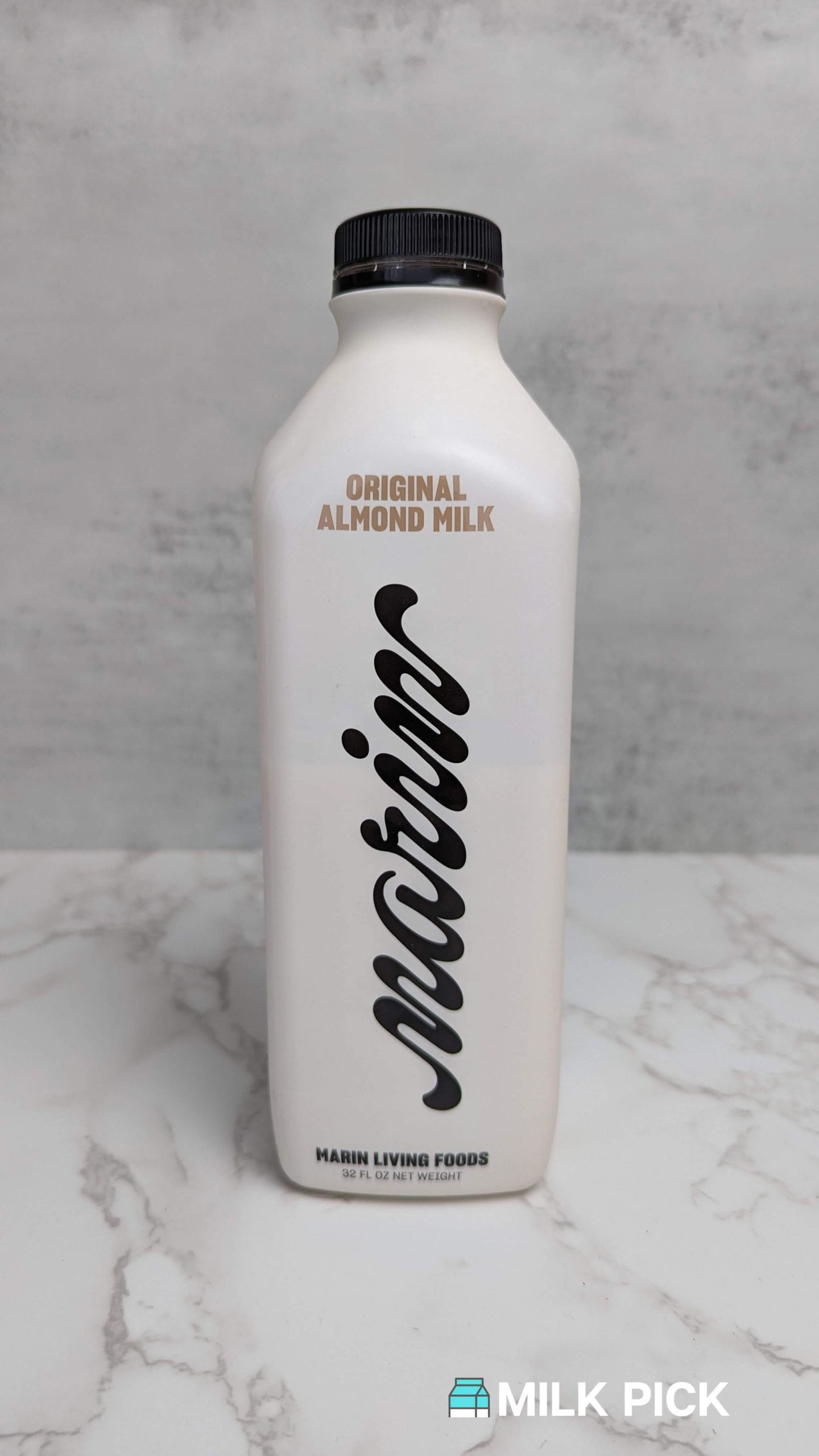
This almond milk only has two ingredients—sprouted almonds and water.
I’m sure this technique will also work with brands with other ingredients.
But at Milk Pick, we believe in keeping your ingredient list simple!
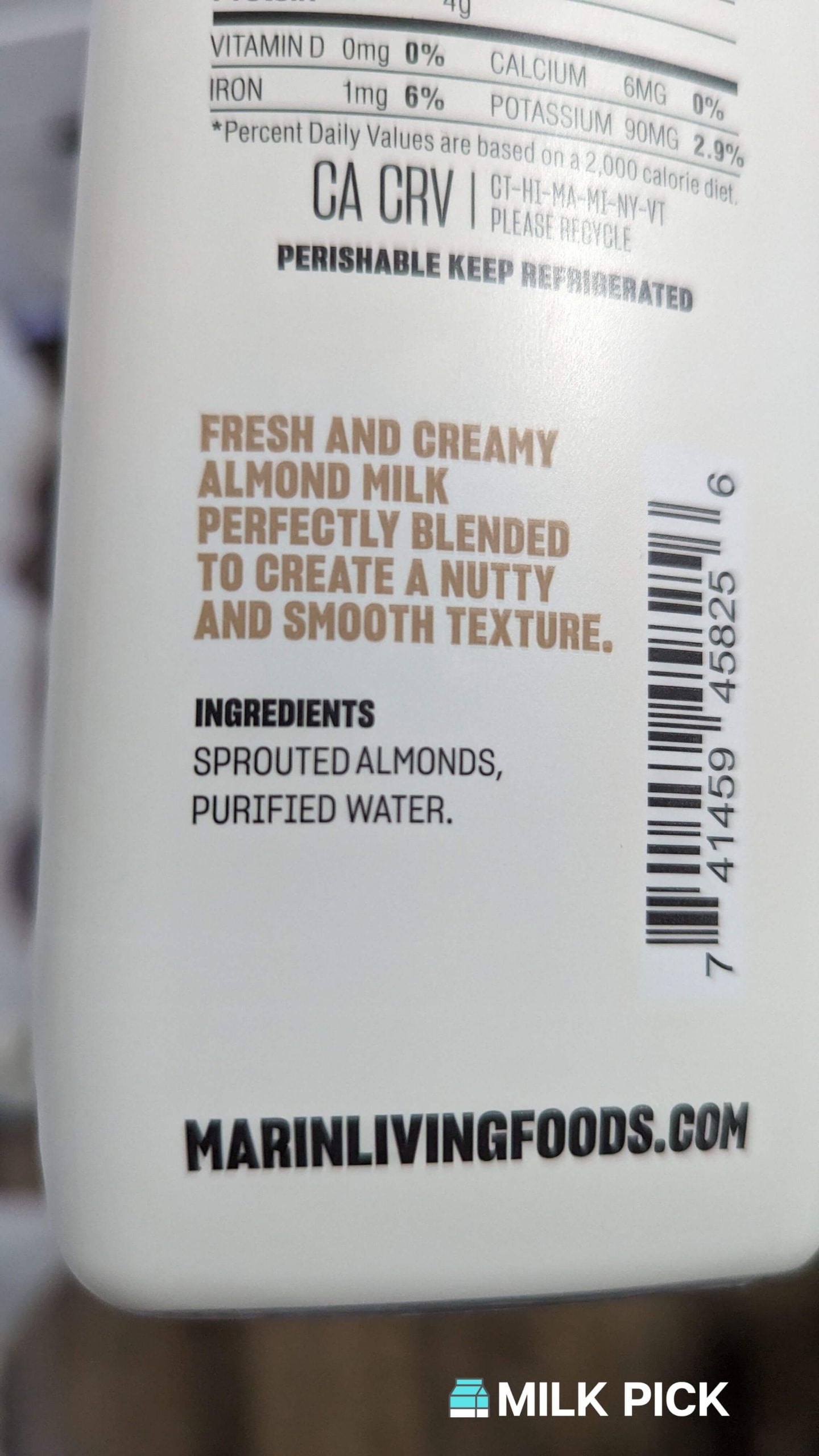
Freezing Almond Milk in a Container
Using a container is a good option if you’re freezing a large amount of almond milk. For instance, in situations when you have a half carton of almond milk that you didn’t finish.
Containers are more compact than multiple ice cube trays, so they’ll take up less room in your freezer. Plus, it’s just more practical.
First, make sure you’re using an airtight, freezer-safe container.
I used glass containers from Ikea, which worked perfectly. There are also plenty of options on Amazon like these. I’d also suggest using glass over plastic (here’s why).
Step 1: Get a clean container to store your almond milk.

Step 2: Pour your almond milk into the container.
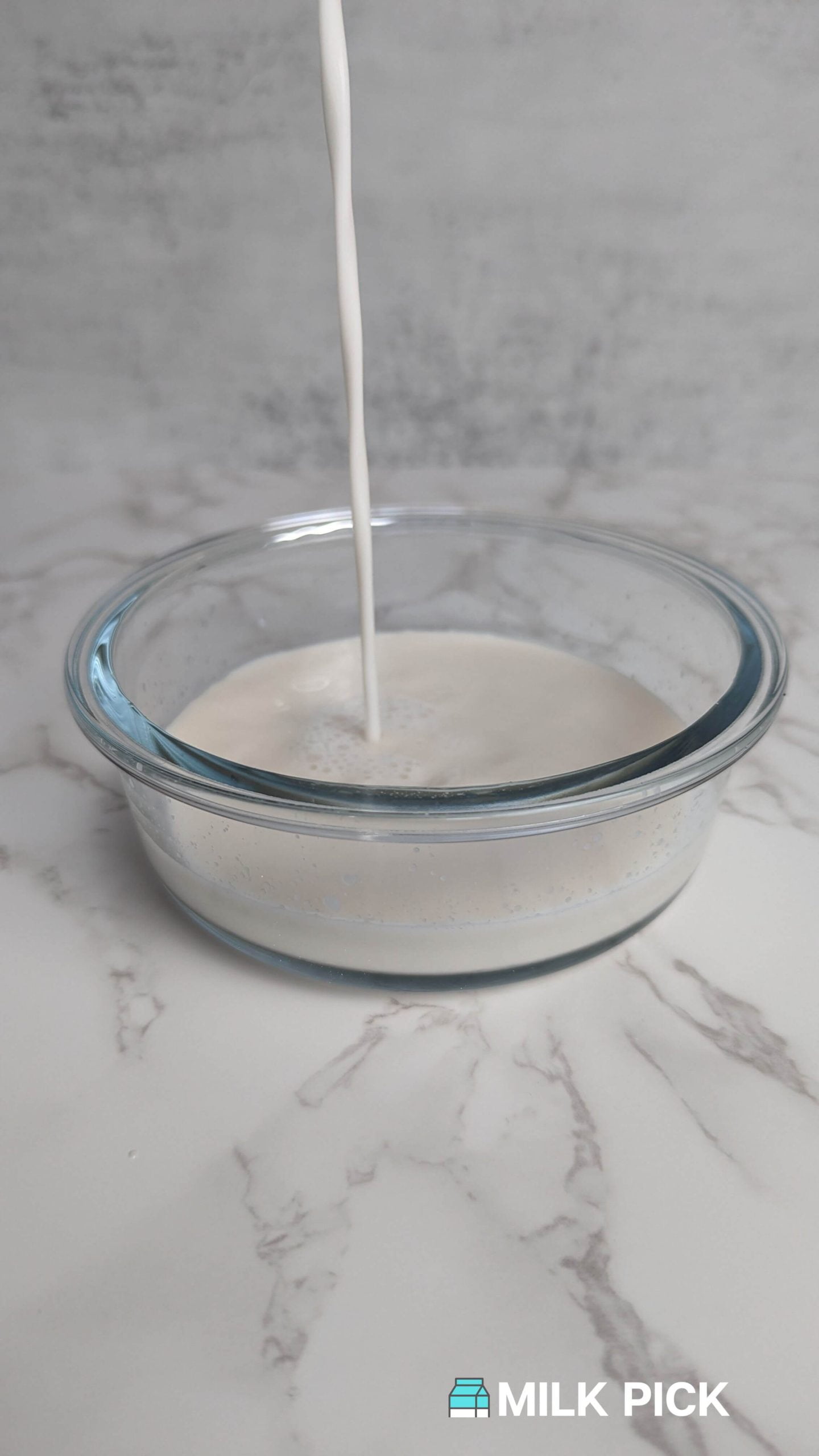
Step 3: Put a lid on the container and store it in the freezer for at least 12 hours.
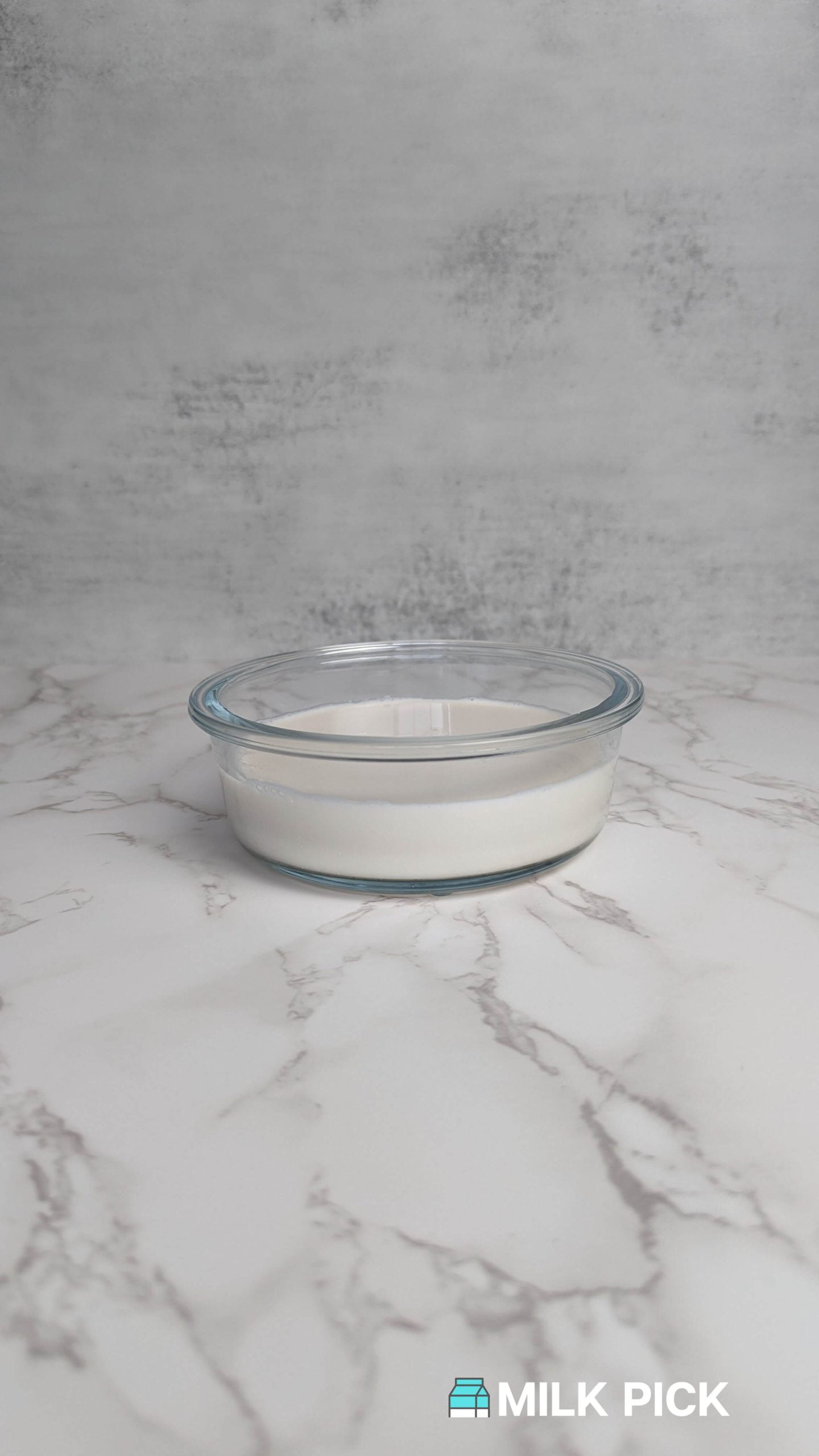
If you’re using a glass container, don’t fill your container to the top. Liquids expand when frozen. The expanded liquid can create pressure and break the glass if you pack your container to the brim.
Freezing Almond Milk in an Ice Cube Tray
Ice cube trays are my preferred method for freezing almond milk. It makes it easier to defrost, and the result is closer to fresh almond milk.
If you’re interested, here’s the ice cube tray I used (from Target).
I’d recommend using a silicone ice cube tray because your frozen almond milk cubes slide out very easily. It’ll save you the hassle of prying your cubes out of a plastic ice cube tray.
Step 1: Clean your ice cube tray.
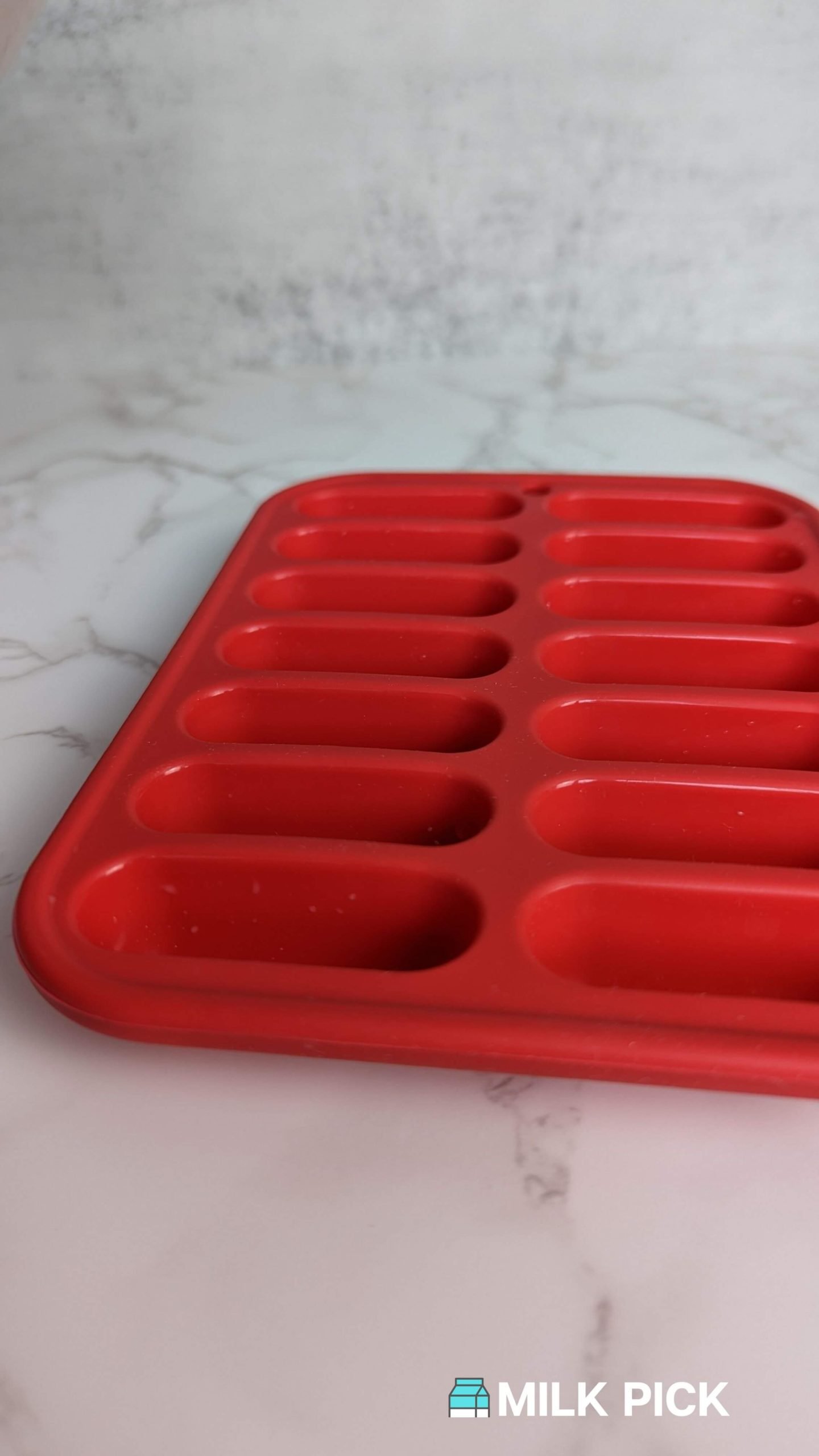
Step 2: Pour your almond milk into the ice cube tray.
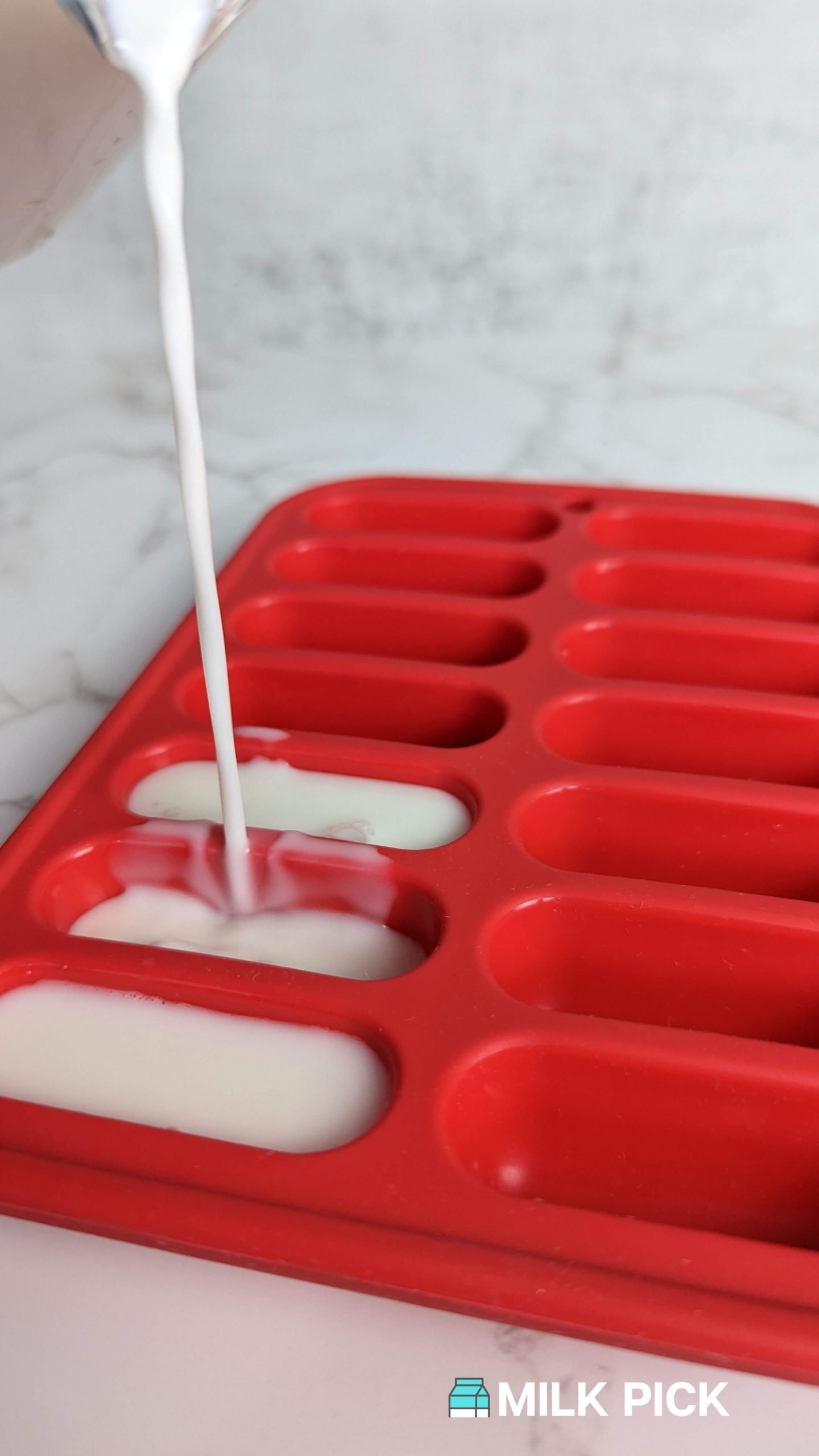
Step 3. Store in the freezer for at least 12 hours.
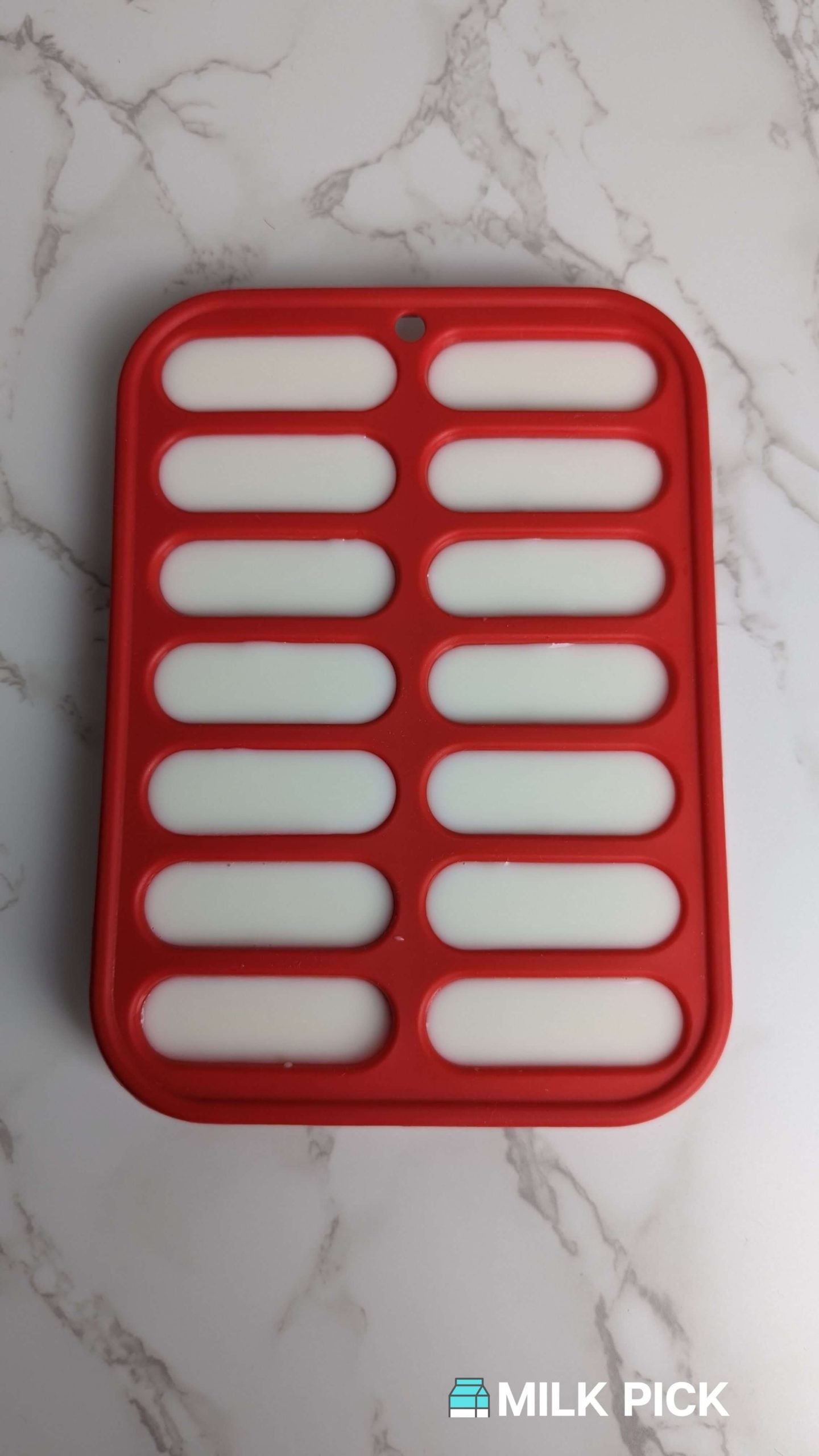
Step 4: After the cubes are completely frozen, transfer them to a freezer-safe bag and put them back into the freezer.
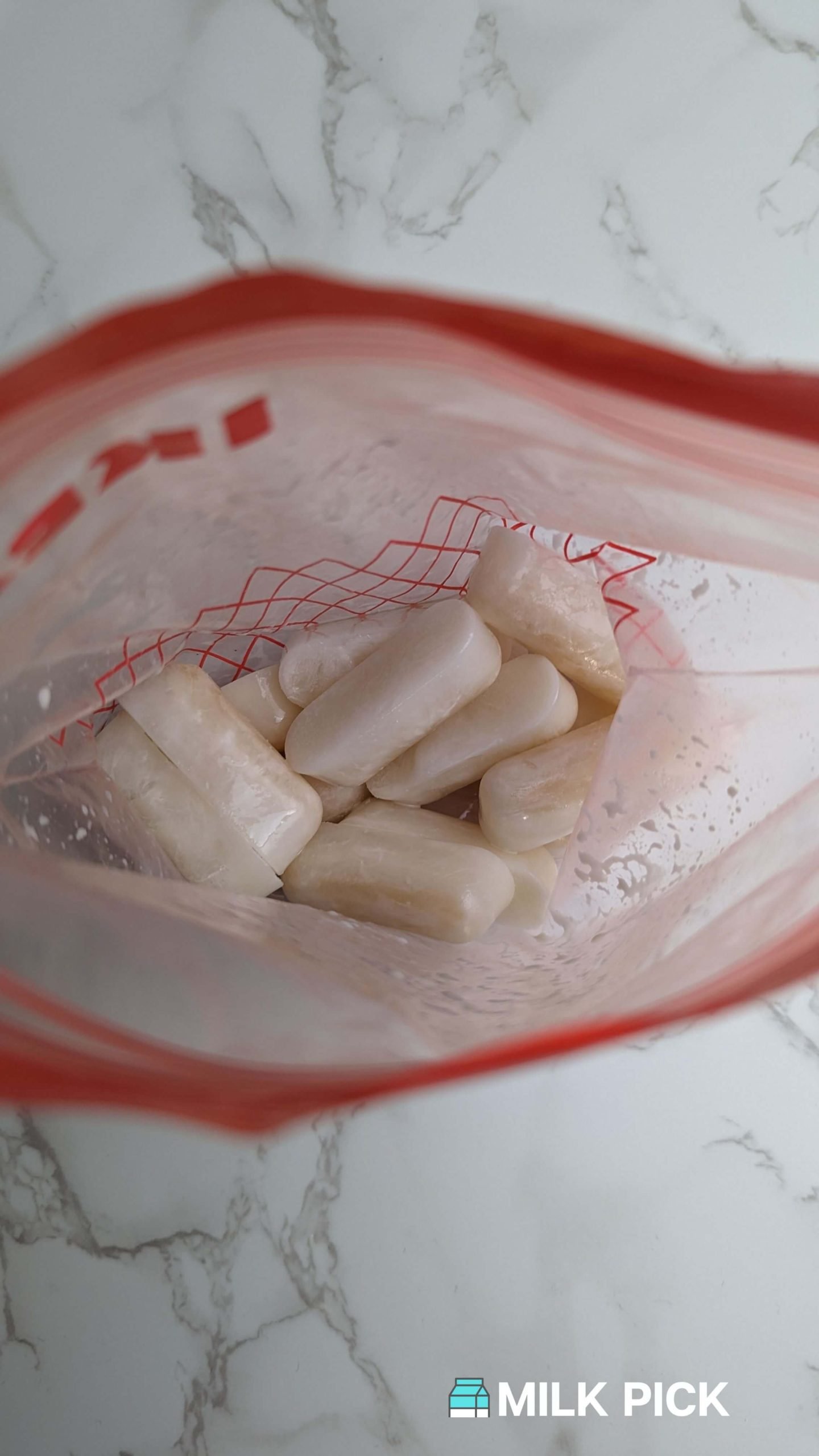
Step four is optional. However, it saves you valuable freezer space. Just make sure you transport them quickly. I found that my frozen almond milk started to defrost fairly quickly outside of the freezer.
Once the cubes start to defrost, sticking them together in a bag will cause them to stick together and form blobs.
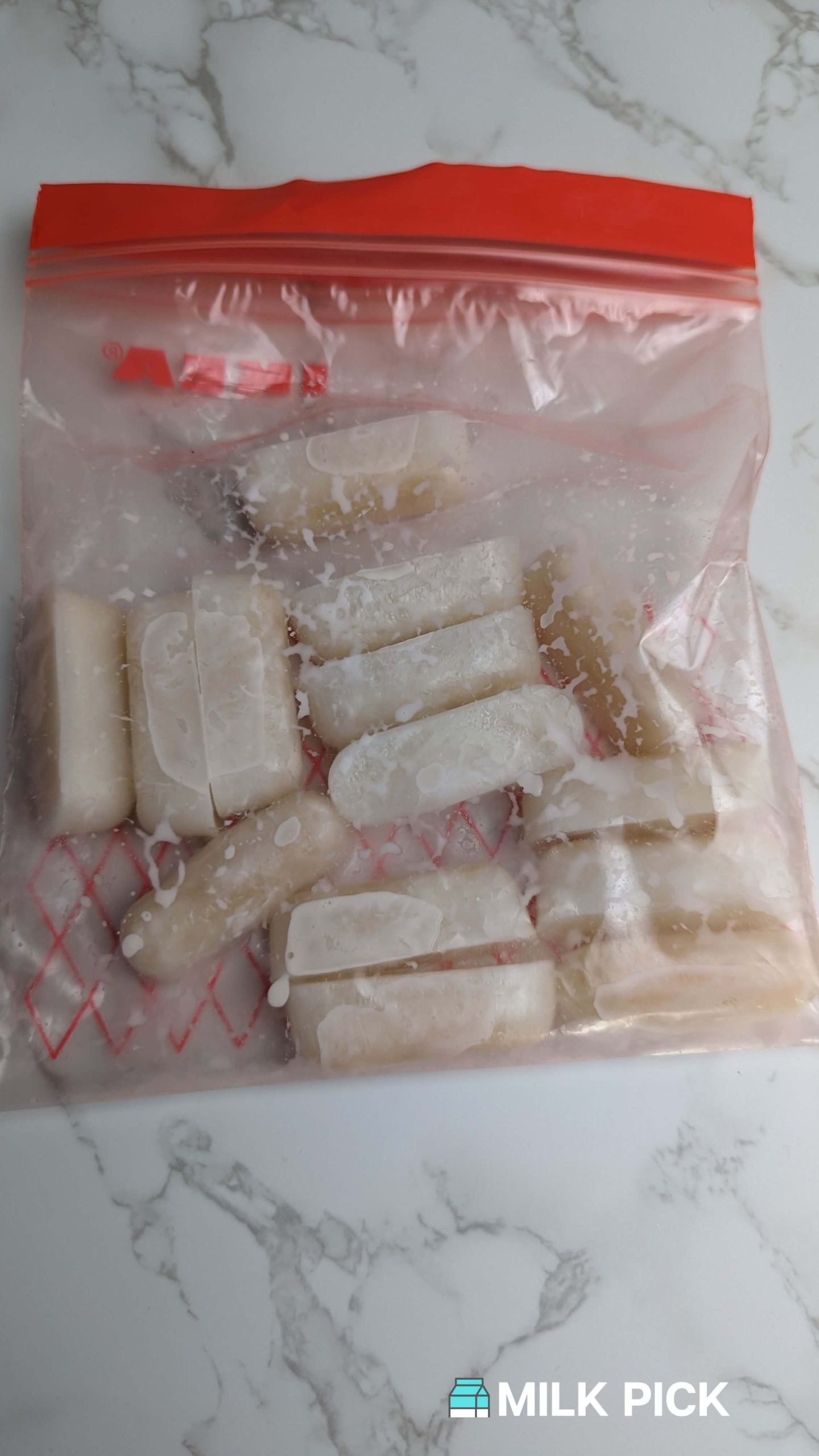
Also, if you don’t want to defrost all of your almond milk at the same time, measure how much almond milk is in each cube.
That way, if you only need three tablespoons of almond milk (for some odd reason), you can take out the appropriate number of cubes when you defrost them.
Here’s a look at both containers side-by-side before I put them in the freezer.
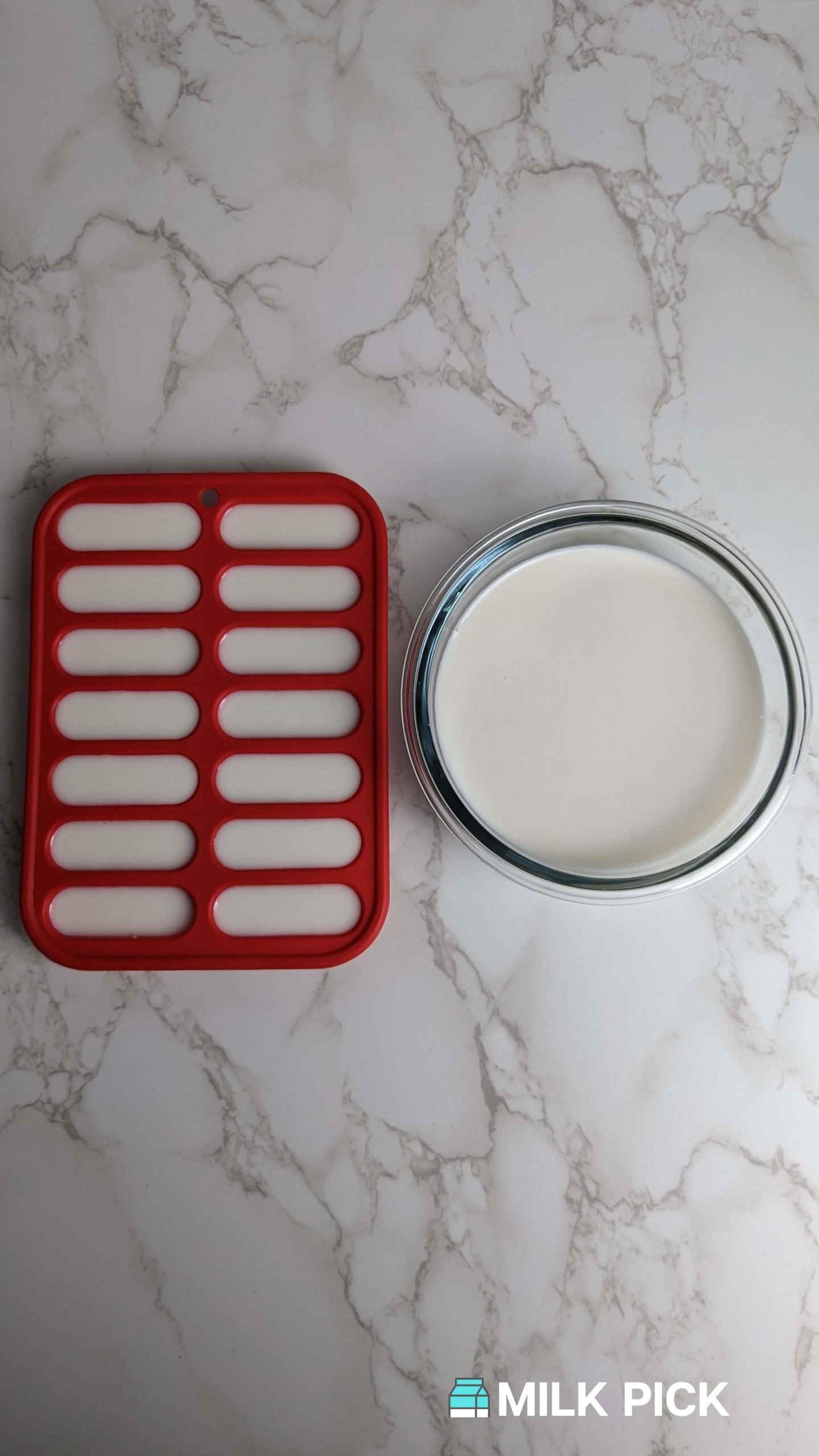
How to Defrost Frozen Almond Milk
Defrosting almond milk is very simple. The technique will vary slightly depending on whether you freeze it in a single container or an ice cube tray.
Defrosting Almond Milk Frozen in a Container
To defrost almond milk you froze in a container, just take the entire container out of the freezer and put it in the refrigerator overnight.
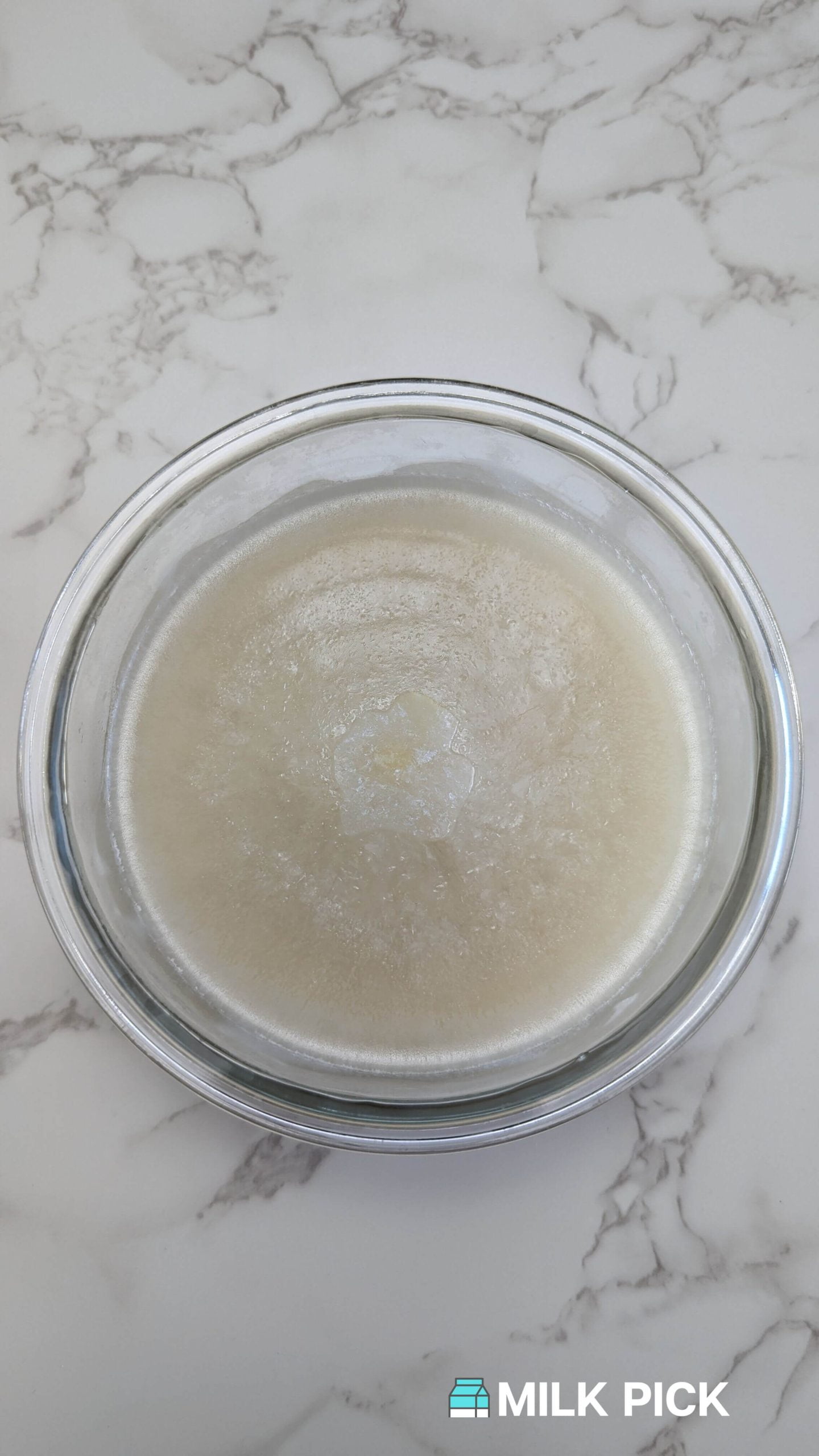
Here's what my almond milk looked like when it finished defrosting.

The downside to freezing almond milk in a container is you have to defrost it all at once. So if you stored a whole container of almond milk, you can’t just defrost half of it.
So whatever amount you freeze, make sure you’re going to use it all once you defrost it. The alternative is to freeze it in smaller containers. But that takes up more space, which isn’t ideal.
Defrosting Almond Milk in an Ice Cube Tray
If you freeze your almond milk in an ice cube tray, here’s how to defrost it.
Step 1: Empty the number of cubes you want to defrost into a container with a lid.

Step 2: Leave it in the refrigerator overnight.

Step 3: Use it within 1-3 days.

While the refrigerator is my preferred method, there are a couple of other techniques:
Warm water: Put your frozen almond milk container (or bag of cubes) into lukewarm water. Make sure the container or bag is sealed, so no water gets in. This method works well if you need to defrost your almond milk quickly.
Defrost while cooking: If you’re using almond milk in a recipe (like soup or a sauce), you can defrost your almond milk by placing the frozen milk directly into your dish. Mix it in very well into your dish, though.
How to Fix Separated Almond Milk
You’ll notice that almond milk separates when frozen, particularly if you freeze it in a container rather than an ice cube tray.
The solids (almonds) will fall to the bottom, while the liquid stays at the top (water).
Here’s a comparison of the frozen cubes vs. the almond milk I froze in a container.
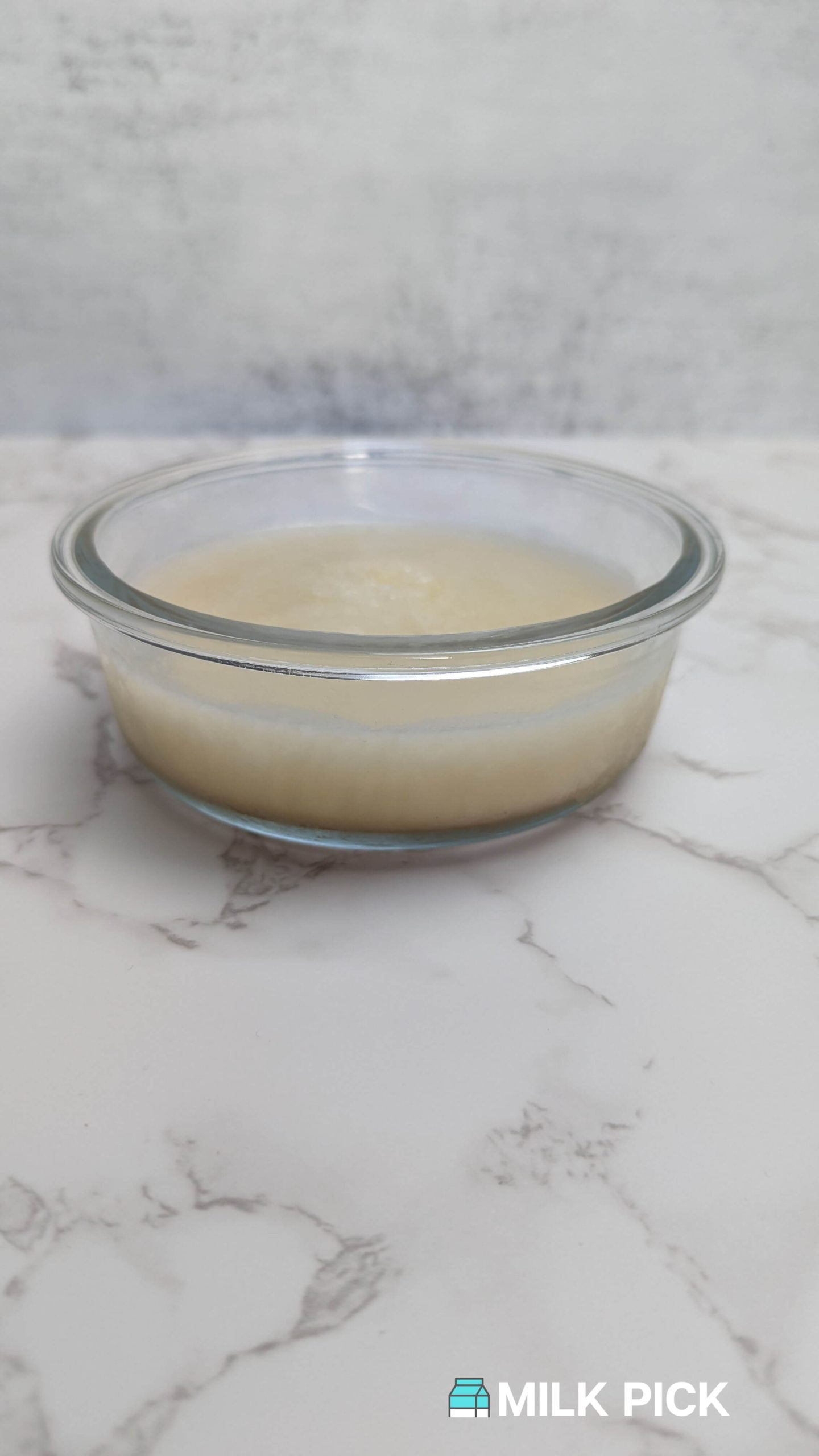
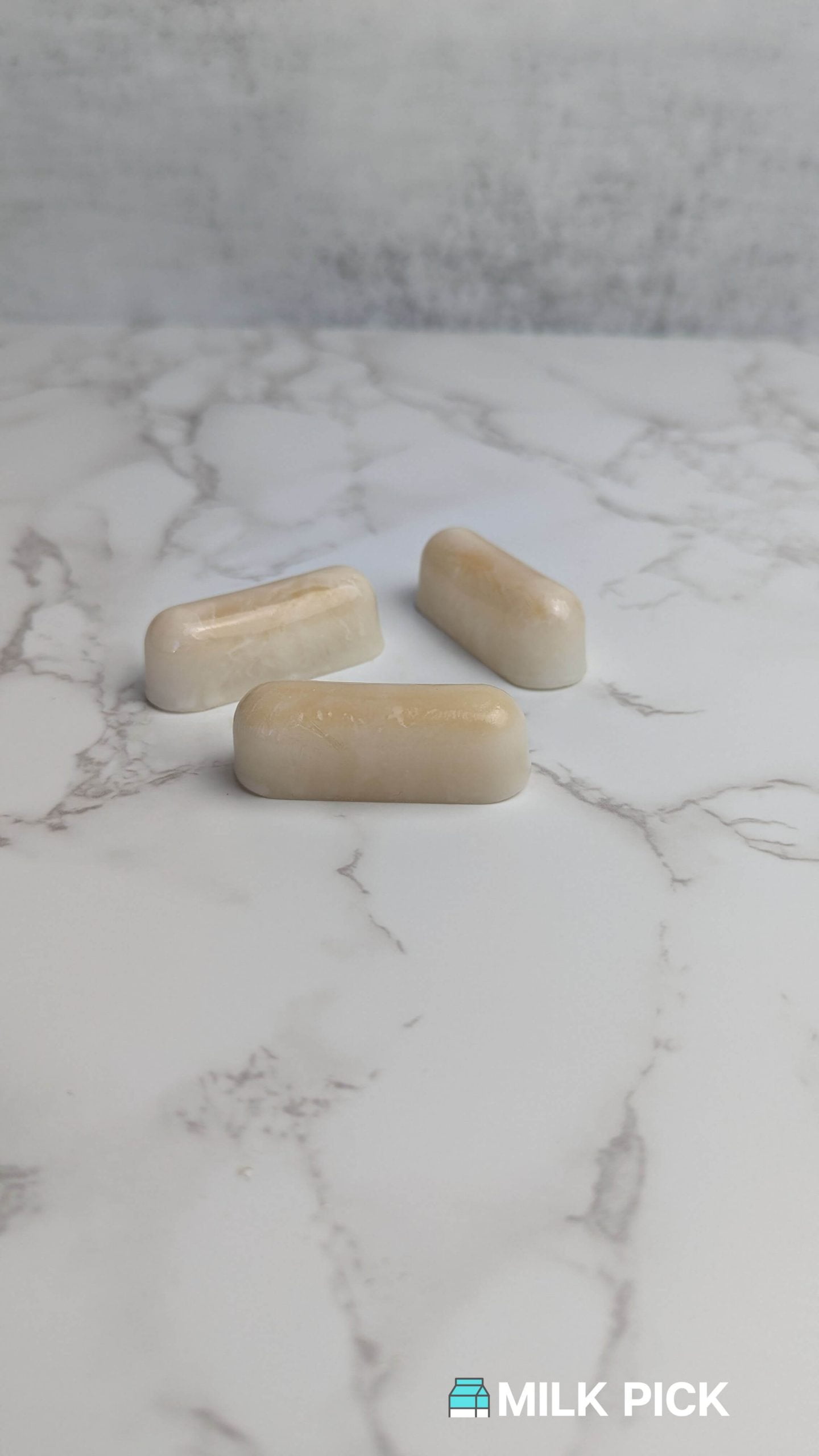

Here's what the almond milk frozen in a container looked like once it was defrosted. Notice the separation.
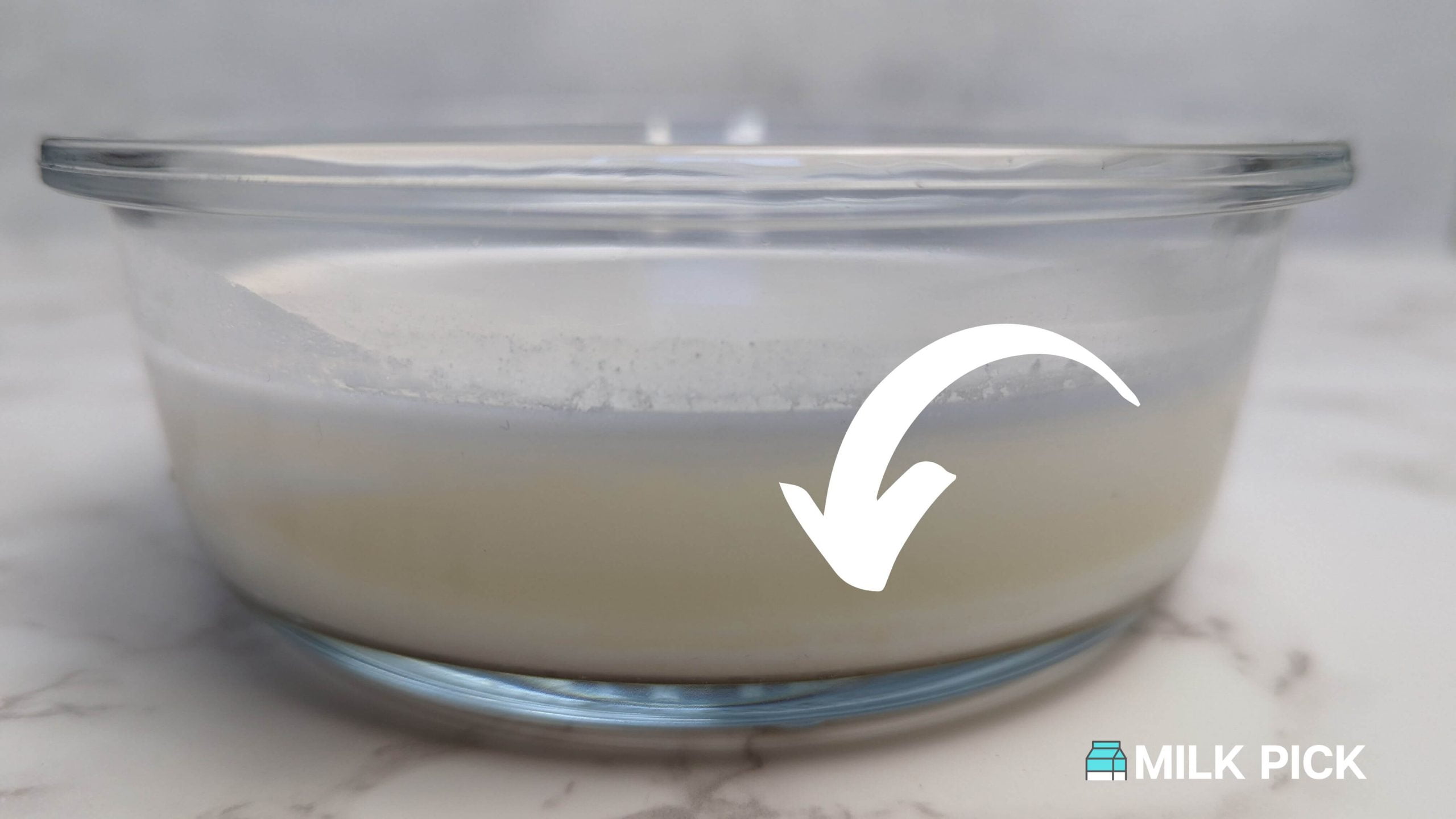
Since the cubes are more compact, there’s less opportunity for the liquid and solid to separate. But I can’t say for sure.
Here’s another look at the cubes.

Regardless, it’s a simple fix.
All you have to do is mix the liquid back together when you defrost it. A simple shake in a glass is enough to blend it back together.
Since I used my frozen almond milk in smoothies, I defrosted it in the fridge and threw it directly into the blender.
How to Fix Grainy Thawed Almond Milk
When you defrost almond milk, you may notice it has a slightly grainy texture. This is primarily due to separation. It should only be an issue if you’re drinking the milk (which I don’t recommend doing anyway).
However, if you want to restore your defrosted almond milk to its smooth and creamy glory, put it in the blender for about 10 seconds.
Some people say it’s possible to get rid of the grainy texture by stirring it, but I recommend using a blender. Blenders are strong enough to mix all of the ingredients thoroughly.
Even if you’re the hardest stirrer in the world, I don’t think you can match the power of a blender.
Comparing Frozen and Fresh Almond Milk
This part was shocking to me.
I wanted to see if I noticed a visual difference between frozen and fresh almond milk. To my surprise, I did notice a difference—but probably not what you’re expecting.
Remember, I froze almond milk in an ice cube and a glass container. After defrosting both and pouring them into drinking glasses, here’s how they looked.
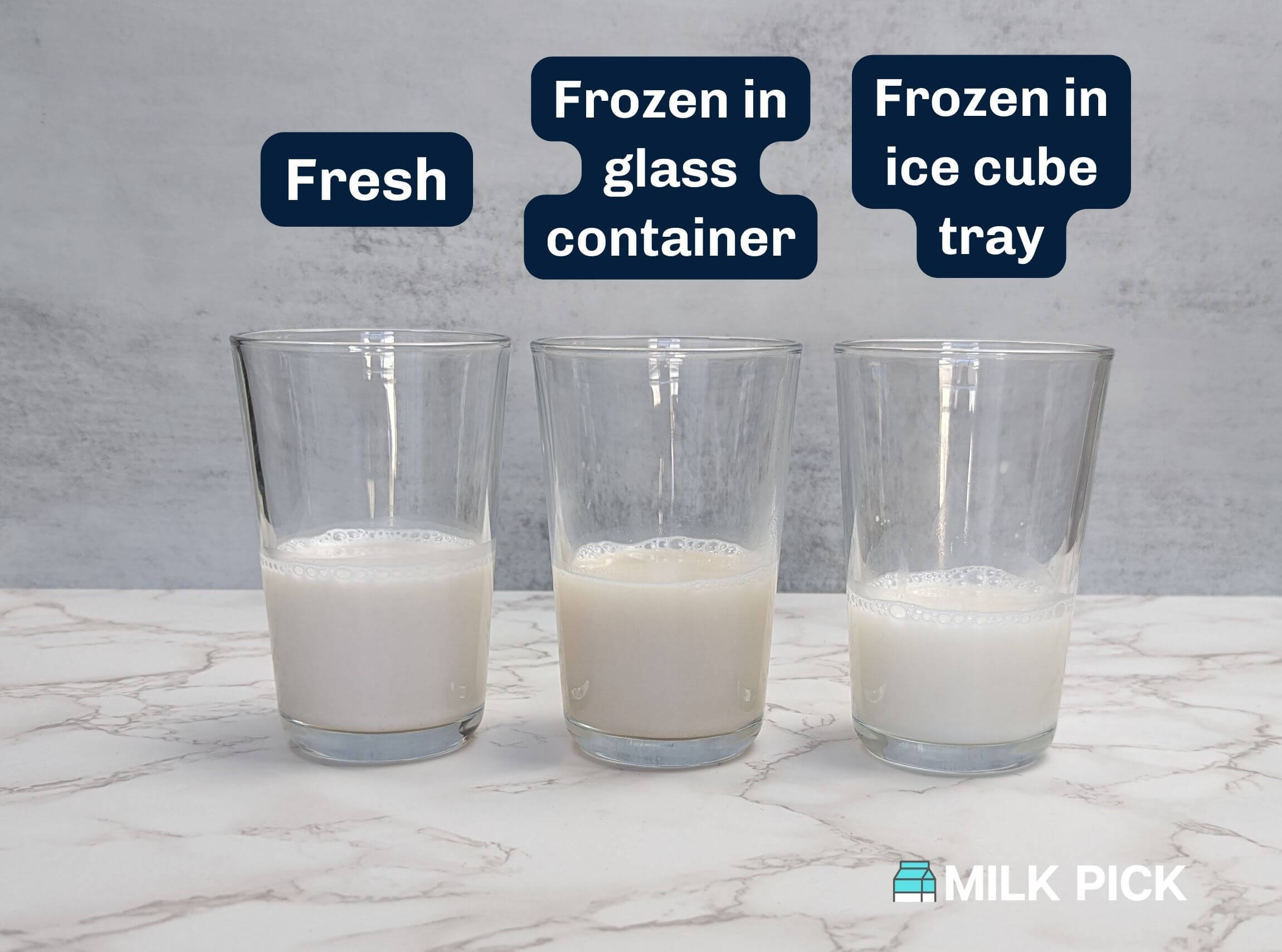
Comparison of fresh almond milk, almond milk frozen in a glass container, and almond milk frozen in an ice cube tray
Strangely enough, the almond milk frozen as cubes is almond identical to the fresh almond milk. The almond milk frozen in a glass container (the middle one) is noticeably darker.
That’s another reason why I recommend the ice cube tray method. It gives you the closest thing to fresh almond milk without sacrificing taste and texture.
My Tips for Freezing Almond Milk
Freezing almond milk is a pretty straightforward process. However, here are some tips to ensure your frozen almond milk stays fresh and is easy to defrost:
- Freeze smaller quantities: While frozen almond milk is perfectly fine to use, I wouldn’t recommend freezing a bunch of it at once. If you have an entire carton of almond milk to freeze, try to use some of it up first.
- Keep it sterile: When almond milk comes into contact with bacteria, it will go bad faster. Make sure the container or ice cube tray you use is clean (your hands too!)
- Label it: If you don’t plan to use your almond milk for a while, label it with the date you put it in the freezer. Otherwise, you’ll risk drinking expired almond milk.
- Use an ice cube tray: In most cases, using an ice cube tray is ideal. It’s easier to store, more convenient to defrost, and there’s not as much separation. The exception is if you have a large amount of milk to freeze. Then a container is your best option.
Related: Can You Heat Up Almond Milk?
Three Best Ways to Use Frozen Almond Milk
For the most part, you can use frozen almond milk for anything you’d use fresh milk for. But it works better in certain dishes. Once you’ve defrosted your almond milk, try using it for the following:
- Smoothies
- Baking
- Cooking
Smoothies
Smoothies are my preferred way to use frozen almond milk. Just pop out the cubes, let them defrost in a bowl, then pour it into your blender with your smoothie ingredients.
Smoothies are great because any change in texture will be unnoticeable.
Baking
Thawed almond milk should be fine for baking. I’d suggest mixing it to eliminate any separation, then using it like fresh almond milk.
Cooking
You can also cook with thawed almond milk. It’s the perfect way to thicken soups and sauces.
Freezing Almond Milk: FAQs
Can You Freeze Almond Milk For Smoothies?
You can freeze almond milk for smoothies with no issues. The smoothie will disguise any grainy texture or separation, especially if you add the almond milk to the blender before blending the smoothie.
It’s also ok to freeze smoothies that have almond milk in them. If you do this, they may lose a bit of texture, but they should be fine to drink.
Can You Freeze Almond Milk In The Carton?
You can place a carton of almond milk in the freezer, but this is not a good idea if it is full. Because the almond milk will expand, there is a risk of the carton exploding.
It’s best to decant the almond milk into an airtight, watertight container and then freeze it.
Can You Freeze Silk Almond Milk?
You can freeze Silk Almond Milk, but the manufacturers don’t recommend it. Per the Silk.com website:
"We do not recommend it. Although freezing does not affect their safety or nutritional value, Silk products change in texture when thawed. However, Silk beverages perform well in frozen dessert recipes."
Can You Freeze Almond Breeze?
According to the Blue Diamond website, you should not freeze Almond Breeze:
“Freezing Almond Breeze® causes the product to separate irregularly and greatly reduces the consistency of the product upon thawing.”
Can You Drink Almond Milk After It Freezes?
Frozen almond milk isn’t harmful to drink. However, because the milk separates, it often has a different texture and taste than you’re used to.
Can You Refreeze Almond Milk?
You can refreeze almond milk if you thaw it in the fridge. However, you shouldn’t refreeze almond milk that you defrost in lukewarm water because it may create bacteria growth.
I suggest storing almond milk in small containers (or in an ice cube tray), so you can use the amount you need and keep the rest frozen.
How Long Can You Freeze Almond Milk?
You should use frozen almond milk within six months of freezing for the best results.
The almond milk may remain safe to use beyond this time, but you’ll start to deal with freezer burn, which will drastically change the texture of your milk.
Ready to Give Frozen Almond Milk a Try?
Freezing almond milk is a great way to make it last longer and ensure that you always have some to hand.
Plus, it reduces food waste (which is a huge problem), so it’s a win-win!
